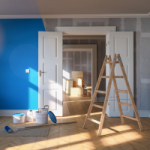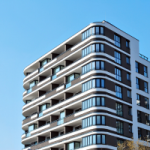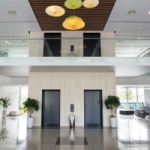February 2024
‘Hang on a minute’, you say. ‘I’ve already got my Depreciation Schedule?’
Yep, but Depreciation Schedules are not fixed in stone – at least ours aren’t. We update them all the time and don’t charge to do so.
If you change your property, there is a good chance you’ll need to change your Depreciation Schedule.
Sometimes it’s just some repairs. Or are they repairs? Do you know the difference between repairs and improvements?
Have you perhaps been whacked with a Special Levy in the last year? How should you claim that?
Maybe you have added furniture to your property and turned it into a short term rental. Was the furniture new or old? The tax treatment differs.
 When is a repair not a repair?
When is a repair not a repair?
When it’s an improvement.
We wrote about this in detail last year here, but below is a brief explanation.
The ATO’s definition of a repair is a bit specific. You can claim work as a repair if you were rectifying damage that happened while YOU were renting out the property.
Painting is a good way to illustrate this.
Let’s say you buy a property and get the keys and rush over to check it out. It looks different from how it did when you inspected it during the time it was on the market – the furniture that was hiding the stains on the walls is all gone and the removalists didn’t take much care wrangling furniture down the hallway.
‘Not to worry,’ you say to yourself. You assume you can have the property repainted and claim it as a repair and write off the whole amount immediately.
Nah.
That damage did not happen while you were renting out the property, so you need to depreciate the cost. And paint depreciates slowly – 2.5% per year over 40 years. Yep.
Now let’s imagine you have a property you have been renting out for, say. 7 years. Tenants move out and the property has had a hard time. If you then do a repaint, there is a good chance you can write it off at 100%.
 How do I claim a Special Levy?
How do I claim a Special Levy?
There is a bit of crossover here with repairs vs improvements. We wrote last year in some detail about the treatment of Special Levies.
Special Levies are typically imposed on owners to deal with building problems. The majority are probably water penetration related – roof membrane failures, windows not sealing, balconies not draining etc.
A lot of investors, and too many accountants, think a Special Levy can be claimed as an immediate write-off and treated in the same way as regular strata contributions.
It often can’t.
Two things to consider are the nature of the work being funded by the Special Levy, and how long you have been renting out the property for.
Let’s say it’s a leaking roof and the membrane needs to be replaced. If you have been renting out your property for some years, there is a good chance that problem arose during that time and you may be able to claim it as a 100% immediate write-off.
But what if you only recently bought the property? If that is the case, you will likely need to depreciate it. And the rate for that sort of work is 2.5% over 40 years. Yep.
 Can I claim furniture?
Can I claim furniture?
It depends.
Don’t you hate that answer?
Coming out of Covid, it’s something we were asked a lot as Airbnb ramped back up again.
We have written about furniture at length before and you can find that here.
In short, if you add BRAND NEW furniture to your rental property, you can depreciate it.
Items below $300 in cost can be written off immediately, and those between $300 and $1,000 can go into the Low Value Pool – 18.75% in the first year and 37.5% per year after that. So furniture depreciates quickly.
But only if it is new. If you furnish your property with second hand stuff you pick up on Gumtree or have sitting around at home, you can’t depreciate it.
We still include it in the Depreciation Schedule in case your accountant can do something with it when they do CGT calcs down the track, but that won’t help you in the short term.
 How do I update my Tax Depreciation Schedule?
How do I update my Tax Depreciation Schedule?
If you need to update your Depreciation Schedule, email enquiries@depreciator.com.au and let us know what you added, when you added it and how much it cost. In most cases we’ll update your schedule free of charge.
If you have any questions, please give us a call on 1300660033 and our team will talk through your changes and let you know the best way to claim them.




 Depreciation returns on houses
Depreciation returns on houses
 Depreciation returns on commercial properties
Depreciation returns on commercial properties

